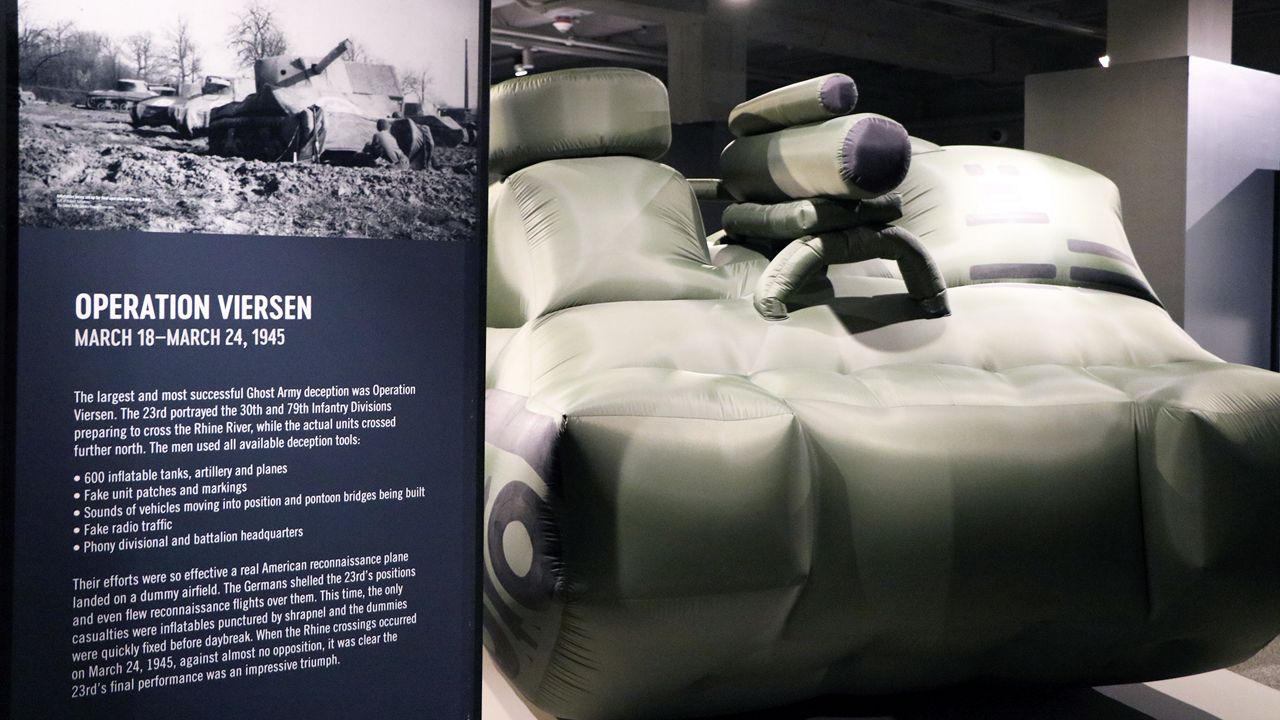ST. LOUIS — History enthusiasts can learn all about the United States’ tactical deception unit during World War II as a special exhibition opens Wednesday at the Soldiers Memorial Military Museum.
The top-secret “Ghost Army,” composed of 82 officers and 1,203 men, was the first mobile, multimedia and tactical deception unit in U.S. Army history, according to Mark Sundlov, managing director of the Soldiers Memorial Military Museum.
They used inflatable tanks and vehicles, fake radio traffic, sound effects, special effects and phony generals to deceive German forces.
High level of detail was used in every aspect of deceit, Sundlov said.
“It was this multimedia, traveling roadshow where they were trying to put ideas into the brains of their enemy as to who they were, where they were located, (and) how they were equipped. They’re trying to send all of that and convince the Germans of something that’s really not there at all,” he said.
Their efforts saved thousands of lives.
“World War II was a time in our history when people just put down their personal lives and said, ‘I need to serve,’ ” Sundlov said, noting that people from all walks of life, especially artists, set aside their own ambitions to fight in the war.
The unit also helped liberate Europe from Nazi tyranny along with the 3133rd Signal Service Company in Italy.
Members of the Ghost Army put themselves in harm’s way, drawing the attention of German troops without heavy weapons. A number of the Ghost Army men died during the war.
“Other army fighting units were like, ‘You guys are nuts. You kind of are putting yourself out there and you don’t have a whole lot of self-defense,’ ” Sundlov said, adding that the Ghost Army members were brave.
“Ghost Army: The Combat Con Artists of World War II” details the 22 large-scale deceptions in Europe, from Normandy to the Rhine River, with the majority of the unit arriving in England shortly before D-Day.
The exhibition features inflatable military pieces, profiles of unit officers, archival photography, sketches and uniforms from unit officers, and historical narrative text panels that discuss unit operations.
To portray a large U.S. Army unit moving in, the Ghost Army recorded sounds of tanks, jeeps, men shouting, the building of pontoon bridges across rivers, among other audio.
“They did some of the earliest multi-track mixing that exists,” Sundlov said. “They’d laid down some tanks, then they’d laid down some jeeps moving in and then they’d layer it and mix it all in; press it into a vinyl record and then transfer it to a wire recorder.”
The recording was then broadcasted through a 500-pound speaker that could be heard by German forces thousands of yards away.
“If they were trying to portray a unit moving out of a location, they would change the volume to make it more convincing to the Germans,” Sundlov said.
To learn about the Ghost Army, the Soldiers Memorial Military Museum is located at 1315 Chestnut Street.
The exhibition will be on display through Jan. 12, 2025. It is organized by The National WWII Museum in Orleans and exclusively sponsored by E.L. Wiegand Foundation.



